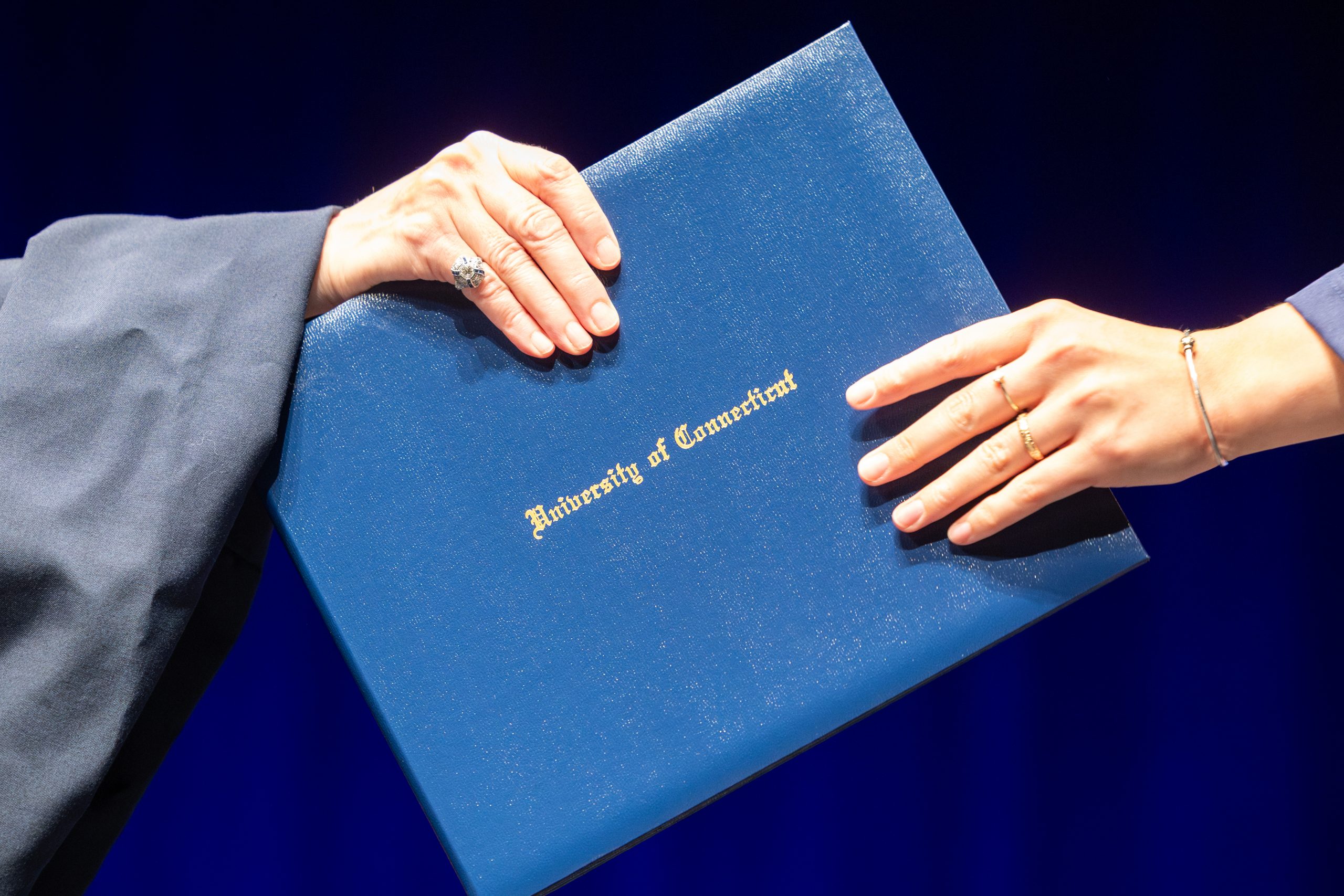Wearable Technologies Power Study on Differences Between Treadmill, Outdoor Running on Injury Risk
When researchers study runners, up until very recently, they have had to conduct these studies in the lab using a treadmill.
But running on a treadmill and running outside — as most runners do — is not the same. This has meant that scientific studies looking to inform our understanding of how running-related injuries occur and how to prevent them are not always transferable to the real world.
With the advent of reliable wearable technologies, researchers are now able to capture data from runners outside the lab.
A new study published in the Journal of Orthopaedic and Sports Physical Therapy (JOST Open) looked at how two key measures related to running-related injuries differ on a treadmill versus running outside on a flat sidewalk.
“In our lab, we’re really about trying to bring things out of the lab and into the world,” Laurie Devaney, associate professor-in-residence and head of the Department of Kinesiology, says. “So, this was an attempt to look at real-world forces and see how they stack up against running on a treadmill.”
Michelle Bruneau ’23 (CAHNR), a former Ph.D. candidate, was the first author on this paper. She is now a post-doctoral research fellow in the Department of Physical Medicine and Rehabilitation at Harvard Medical School and Spaulding Rehabilitation Hospital.
The study used 28 healthy, male and female adult runners. Participants ran eight kilometers on the treadmill and the road while wearing ankle and chest sensors to track their step rate and tibial acceleration.
Step rate is a measure of how many steps the runner takes over a certain distance. Tibial acceleration is a proxy for the impact load during a run.
“When we look at running-related injuries we know that things like step rate and tibial acceleration can be associated with those injuries, especially bone-stress related injuries [like tibial stress fractures and shin pain],” Devaney says.
The researchers found that while step rates were similar in both settings, when the runners were outdoors, there was a trend toward an increasing step rate as the run went on. This is good as an increased step rate reduces the force of each step, better protecting the runner from injury.
Another significant difference is that peak tibial acceleration was greater outdoors than on the treadmill.
“If we’re thinking about this notion of forces and accumulated forces it’s probably greater in an outdoor run than it is on the treadmill,” Devaney says.
Using additional data collected during this study, the researchers have another publication forthcoming focused on motion capture data. These data provide information on how the runners were moving and what that can tell the researchers about injury risk.
This research also has applications for cadets in ROTC programs and military members who frequently suffer from the same kinds of injuries as runners.
“If we have ways to measure them out in the field, we are going to be better able to identify some of the culprits that are leading to these injuries and modify them,” Devaney says.
As wearable technologies become better and more diverse, there will only be more opportunities to study people in real-world settings rather than only in the lab.
“These increased forces are important for running-related injuries and our measurements on the treadmill are not necessarily synonymous with what we see in real-world application,” Devaney says. “[We’re] really encouraging researchers and clinicians to consider those differences and move toward the ability to measure people outdoors.”
This work relates to CAHNR’s Strategic Vision area focused on Enhancing Health and Well-Being Locally, Nationally, and Globally.
Follow UConn CAHNR on social media
Latest UConn Today
- PHOTOS: UConn Law CommencementNearly 200 graduates celebrated Commencement at UConn Law
- Charting Our Galaxy’s Extreme CenterUConn researchers develop a clearer 3D model of the galactic center
- Disaster Response: Master and ApprenticeUConn Health emergency medicine physicians Rob Fuller, Caroline Lloyd back from Myanmar earthquake aid mission
- Our Health, Our Economy, Our Nation, Our FutureUConn research has an extensive, proud history of federal and state partnerships that have helped shape Connecticut and the world beyond.
- First Genetic Counseling Professional Science Master’s Students GraduateThe two year program is uniquely positioned to give students broad experience in both research and clinical genetics
- ‘Doctors Academy’ Graduates Win College ScholarshipsConnecticut High School Seniors graduated on May 14 from the Health Career Opportunity Programs of UConn Health













